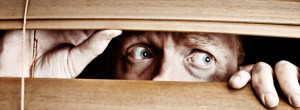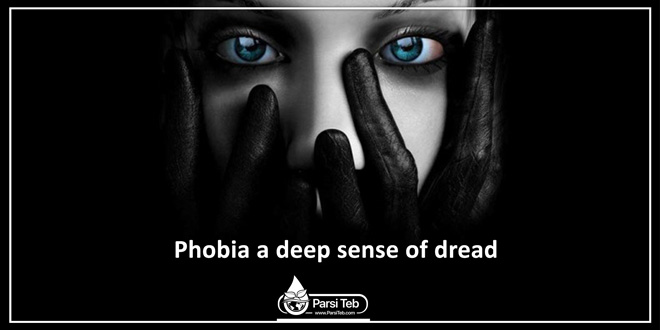A phobia is an excessive and irrational fear reaction. If you have a phobia you will experience a deep sense of dread, and sometimes panic, upon encountering the source of your fear. The fear can be of a certain place, situation, or object. Unlike general anxiety disorders, a phobia is usually connected to something specific.![]()
The impact of a phobia can range from annoying to severely disabling. People with phobias often realize their fear is irrational, but are unable to do anything about it. Such fears can interfere with your work, school, and personal relationships. If you have a fear that prevents you from leading a normal life, you should see a doctor’s help. It’s estimated that 19 million Americans have a phobia that causes difficulty in some area of their lives (ADAA).
What Causes Phobias?
Phobias can be caused by genetic and environmental reasons. Children who have a close relative with an anxiety disorder are at risk for developing a phobia. Distressing events can bring on a phobia. Exposure to confined spaces, extreme temperatures, nearly drowning, or an animal or insect bite can all be sources of phobias.
Phobias are often found in patients with ongoing medical conditions or health concerns. There is a high incidence of phobia development after traumatic brain injuries. Substance abuse and depression also have been connected to phobias.
Different Types of Phobias
There are more than 100 different phobias recognized by the American Psychiatric Association (APA). Here are a few of the most common, and some specific phobias.
Agoraphobia
Agoraphiobia is a fear about places or situations from which one cannot escape. The word itself refers to “fear of open spaces.” People with agoraphobia fear being in large crowds or trapped outside the home in full exposure. Agoraphobics often avoid social situations altogether and stay inside their homes.
Many agoraphobics fear they may have a panic attack in a place where they cannot escape. Those with chronic health problems may fear they will have a medical emergency in a public area where no help is available.
Social Phobia
Social phobia is also referred to as “social anxiety disorder.” This is extreme worry about social situations that can lead to isolation. A social phobia can be so severe that the person can panic over even the simplest interactions, such as ordering at a restaurant or answering the telephone. As with all phobias, the person recognizes the fear as irrational, but he or she cannot seem to do anything stop it. Those with social phobia will often go out of their way to avoid public situations.

Specific Phobias
Many people dislike certain situations or objects, but to be a true phobia, the fear must interfere with your daily life. Some of the most common are:
Glossophobia: performance anxiety, or the fear of speaking in front of an audience. People with this phobia have severe physical symptoms when they even think about being in front of a group of people.
Acrophobia: the fear of heights. With this phobia, you will avoid mountains, bridges, or the higher floors of buildings. Symptoms include vertigo, dizziness, and an overwhelming feeling that one may be unable to control the urge to jump.
Claustrophobia: the fear of enclosed or tight spaces. Severe claustrophobia can be especially disabling if it prevents you from riding in cars or elevators
Aviatophobia: the fear of flying. It is estimated that 10 percent of the population avoids airplane travel because of this phobia.
Dentophobia: fear of the dentist or dental procedures. This phobia generally develops out of an unpleasant experience at a dentist’s office. The harm is that it may prevent your from obtaining needed dental care.
Hemophobia: fear of blood or injury. A person with hemophobia may faint when they come in contact with his or her own or another person’s blood.
Animal or insect phobias: most common are arachnophobia (fear of spiders), cynophobia (fear of dogs), and ophidiophobia (fear of snakes). These often develop out of normal childhood fears, but may be connected with a past experience like an animal bite.
Nyctophobia:fear of the nighttime or darkness. This phobia almost always begins as a typical childhood fear. However, when it progresses past adolescence, it’s considered a phobia.
Who is at Risk for Phobias?
Those with a genetic predisposition for anxiety are at a high risk for phobias. Age, socioeconomic status, and gender only seem to be risk factors for certain phobias. For example: women are more likely to have animal phobias. Children or people with low socioeconomic status often have social phobias. Men make up the majority of those with dentist and doctor phobias.
What are the Symptoms of Phobias?
 The most common and disabling symptom of a phobia is a panic attack. Features of a panic attack include:
The most common and disabling symptom of a phobia is a panic attack. Features of a panic attack include:
- pounding or racing heart
- shortness of breath
- rapid speech or inability to speak
- dry mouth
- upset stomach or nausea
- elevated blood pressure
- trembling or shaking
- chest pain or tightness
- choking sensation
- dizziness or lightheadedness
- profuse sweating
- sense of impending doom
A person with a phobia does not have to have panic attacks for accurate diagnosis. The intensity of anxiety can vary among those with phobias.
Treatment for Phobias
Treatment for phobias can involve therapeutic techniques, medications, or a combination of both.
Cognitive Behavioral Therapy
The most commonly used therapeutic treatment for phobias is cognitive behavioral therapy (CBT). CBT involves exposure to the source of the fear, but in a controlled setting. This treatment can decondition patients and reduce anxiety. The therapy focuses on identifying and changing negative thoughts, dysfunctional beliefs, and negative reactions to fear. New CBT techniques use virtual reality technology to safely expose patients to the source of the phobia.
Medication
Antidepressants and anti-anxiety medications can help calm your mind and physical reactions to fear. Often, it is the combination of medication and professional therapy that make the biggest difference.
If you have a phobia, it is critical that you seek treatment. While overcoming phobias is difficult, there is hope. With the right treatment, you can learn to manage your fears and lead a productive, fulfilling life.
Reference:
http://www.healthline.com/
 Parsi Teb Physical and Mental Health Journal
Parsi Teb Physical and Mental Health Journal 



